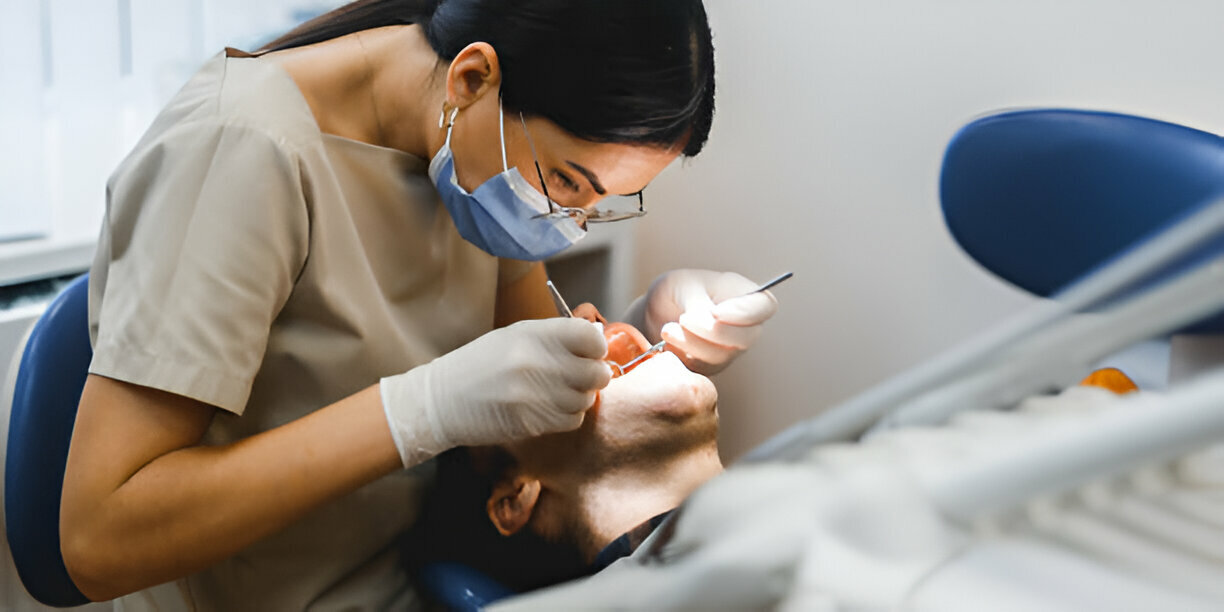Summary:
Modern dentistry has many effective ways to repair a damaged tooth. However, even these modern advancements have limitations, and tooth extraction is the only feasible option.
Numbers show that 74% of adults have extracted at least one tooth. This is an interesting figure highlighting the growing prevalence of these procedures.
But what if your dentist recommends a tooth extraction procedure? Are you prepared for it, and what should you expect? This blog will answer all these questions with a deeper insight into the following topics:
- What is the Tooth Extraction Procedure And Why People Need It?
- What To Expect Before Tooth Extraction?
- What To Expect During The Tooth Extraction Treatment?
- What To Expect After The Tooth Extraction Procedure?
So, let’s learn more about tooth extraction procedures and ensure better preparation for your next dental appointment!
What is the Tooth Extraction Procedure And Why People Need It?
Tooth extraction is a standard dental procedure in which a dentist removes an affected or damaged tooth from its socket. While the process seems daunting initially, things are more manageable with the proper anesthetic. Modern advancements in this field are enough to ensure you feel little to no discomfort during the procedure.
There is more than one reason why your dentist in Garland, TX, might recommend you to get a tooth extraction procedure. Some of the best-known of these reasons include:
1. Crowding:
Teeth crowding is a relatively common condition in which a tooth must be extracted to make room for another upcoming tooth.
2. Decay:
Severe tooth decay resulting in extensive damage beyond the repair of the tooth might make you the ideal candidate for tooth extraction.
3. Gum Disease:
If you have a tooth with advanced periodontal disease, you might need to extract it to prevent further spread or damage.
4. Infection:
As with gum diseases, tooth extraction is the only effective way to prevent severe tooth infections from spreading further.
5. Trauma:
Trauma resulting in severe damage to a tooth or multiple teeth might require tooth extraction for proper treatment.
What To Expect Before Tooth Extraction?
Preparing for a tooth extraction does not require adherence to an extensive preparation process. Instead, following simple steps is enough to get the deed done. Some of these steps include:
1. Consultation and Diagnosis:
The first step of the tooth extraction process is a consultation with your dentist. When you arrive at your nearest dentist for tooth extraction in Garland, TX, they will examine the tooth, take X-rays to assess the root structure and surrounding bone and discuss the reason for the extraction. You must mention any medical conditions and medications you are taking, including over-the-counter drugs and supplements.
2. Discuss Treatment Options:
Depending on the condition’s severity, your dentist might explore alternative treatments like root canals or antibiotics before recommending an extraction. However, suppose the extraction seems to be the only feasible alternative. In that case, the dentist will discuss the procedure details and options for anesthetic alternatives and answer any questions you may have.
3. Planning The Post-Treatment Care:
You must prepare your post-treatment care to minimize the chances of things going wrong. You can start by arranging for someone to drive you home after the procedure, as you might be under the anesthetic effect. Also, stock up on soft foods like yogurt and mashed potatoes for the first few days after surgery when chewing will be difficult.
What To Expect During The Tooth Extraction Treatment?
Now that you have completed all the pre-treatment preparation rituals, it is time to focus on preparing for the treatment itself. While this is a relatively simple process, here are some things you can expect during the treatment.
Step 1: Arrival At The Clinic
When you arrive, your dentist or hygienist will take you to the treatment room. A final explanation of the procedure and answers to last-minute questions will follow.
Step 2: Anesthetic
Your preference, dentist’s recommendation, and medical condition will determine the right anesthetic choice. You might get a local anesthetic to numb the area around the tooth or use nitrous oxide for better relaxation. Sometimes, you might require a general anesthetic that puts you to complete sleep.
Step 3: Extraction
With the correct type of anesthetic doing its job, the dentist will loosen the tooth with instruments and gently remove it. Sometimes, they might need to section the tooth for easier removal.
Step 4: Bleeding Control
After removing the tooth, the dentist will focus on stopping any bleeding. This usually involves gauze packing or stitches to close the gum tissue.
What To Expect After The Tooth Extraction Procedure?
Extracting your tooth is only a job halfway done. Following this, you must adhere to stringent post-care instructions to ensure prompt healing with minimal discomfort. Hence, here are some essential recovery tips to help you out.
a. Pain Management:
After the tooth extraction treatment, your dentist will prescribe pain medication to manage discomfort, and you must take it exactly as directed.
b. Swelling:
Around the extraction site, swelling is typical and usually peaks in two to three days. Apply an ice pack to your cheek’s exterior for 15-minute bursts daily to minimize swelling.
c. Bleeding:
Slight bleeding is no matter of concern for the first 24 hours. You can bite down gently on gauze pads to control it and avoid strenuous activity and excessive spitting. This is important to prevent the blood clot from dislodging, which can lead to a painful condition called dry socket.
d. Maintain Proper Diet:
For the first several days following the extraction, follow a gentle diet. Avoid hot beverages and spicy meals since they may irritate the extraction site. Then, as your recuperation advances, you can progressively resume eating tougher foods.
e. Proper Oral Hygiene:
Maintaining adequate oral hygiene is essential for preventing infection. Gently brush your teeth, but avoid the extraction site for the first few days. You can use a saltwater rinse to keep the area clean.
f. Take Enough Rest:
You should get plenty of rest after the first 24 to 48 hours of the tooth extraction. This is important for ensuring proper recovery and healing.
Takeaway
- Stats suggest that nearly 74% of adults have extracted at least one tooth.
- Tooth extraction is a relatively standard procedure in which a dentist removes an affected or damaged tooth from its socket.
- Crowding, decay, infection, trauma, and gum diseases are some of the reasons to get front or rear tooth extraction.
- Consultation, exploring treatment options, and planning post-treatment care are some of the essentials before getting a tooth extraction.
- Anesthetic choices, extraction, and bleeding control are some essentials you must be concerned about during the tooth extraction treatment.
- Ensure you take all the proper measures to ensure prompt recovery and healing after the tooth extraction procedure.
- Don’t let the thought of tooth extraction make you uncomfortable! Visit our experts at Distinctive Dental Concepts today!










